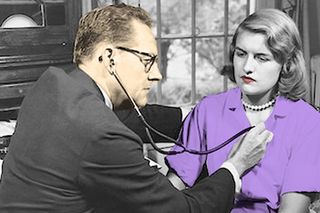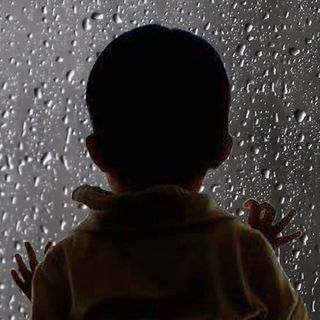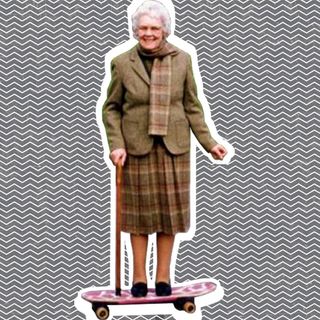
Some Doctors See Pain As Just A Symptom of Being Female
Health care can’t shake its sexism problem.

In 2013, Anjalli Ravi Kumar gave birth to her first child. Childbirth passed smoothly, but breastfeeding was difficult, and it quickly became painful.
“Breastfeeding is a painful experience — everyone experiences pain (at some point). The question is – is it normal pain? People I spoke with, cousins and friends, told me it was abnormal and I should get it checked out,” Ravi Kumar recalls. “It was intense pain – intense pain during feeding, after feeding. Like someone stabbing you in the back.”
She went for an examination, but the doctor assured her everything was normal. In the weeks that followed, Ravi Kumar was on the phone with her OB/GYN every other day.
“She was super dismissive,” Ravi Kumar says. “They wouldn’t take me seriously. I suppose because I wasn’t presenting typical symptoms. But I was calling her repeatedly telling her I was in serious pain.”
This dragged on for a month, during which time an increasingly desperate Ravi Kumar sought a physical examination by her daughter’s pediatrician.
“’If you don’t feed your child, if you give her the bottle, she will forget you,’” Ravi Kumar remembers the pediatrician telling her. “They say a lot of crap like this; they do fearmongering.”
Ravi Kumar continued calling her gynecologist, reporting serious pain.
“She didn’t put me through any kind of pain scale,” Ravi Kumar recalls. “There was no question of really paying attention.”
When Ravi Kumar finally convinced her gynecologist to order an ultrasound, it revealed “a massive infection.” The doctor apologized – but also said she had assumed Ravi Kumar was exaggerating her reports of pain to get out of breastfeeding.
“There is an underlying belief that women exaggerate,” Ravi Kumar says. “There’s an underlying thing that women are emotional, women exaggerate. Women, especially young women, are not tolerant of pain.”
*
Women’s pain has a long history of being disregarded, especially when it is related to reproduction. Ancient Greek physicians attributed women’s mental and physical suffering to a condition called “wandering womb” – later, the father of modern medicine, Hippocrates, dubbed it “hysteria,” from the Greek word for womb, hysteros. Hysteria would remain a valid diagnosis for women until 1980, lending credence to arguments against women’s empowerment.
Its legacy remains in the word ‘hysterical,’ a word that Claudia Barbara Tanna remembers hearing during her pregnancy.
“He said, ‘I think this is your first pregnancy. I think you’re a little hysterical.’”
Tanna, who was pregnant in Mumbai with her first child in 2000, recalls experiencing terrible headaches and aching in her belly during her second trimester. She stuck it out for a day or two, she says, but then consulted a doctor at her mother-in-law’s insistence. The doctor was not her typical gynecologist – it was a “better” doctor, one who came highly recommended by friends.
“The doctor sat me down, then asked the husband, ‘How is she feeling?’” Tanna recalls. “He didn’t ask me, he asked my husband.”
When Tanna’s husband redirected the question to Tanna, she told the doctor of her headaches, belly pain, and a slight fever. She said he performed a very brief physical examination.
“He said, ‘I think this is your first pregnancy. I think you’re a little hysterical,’” Tanna recalls. “’I’m giving you an injection to chill you out.’”
Tanna returned home, only to have pain flare up again, worse, that evening. Tanna called the doctor, and met him again the next day. He diagnosed gas, and prescribed a pain killer and sent Tanna home.
“Again, in the evening, it was really, really bad,” Tanna says. “I wanted to go back to my old doctor. I had a feeling this isn’t right — I know what gas feels like and I’m not exactly hysterical also. I was hot, shivering, could hardly keep myself on my legs.”
Tanna’s original gynecologist diagnosed a staph infection on the brink of being fatal for Tanna, her baby, or both. She spent a week in the hospital, pumped full of antibiotics. Tanna recovered and eventually gave birth to a healthy baby.
“’She’s hysterical, she’s too old,’” recalls Tanna, who was 39 at the time. “I wasn’t taken seriously at all by the other doctor. He didn’t even bother to take a blood test.”
*
Pain is a difficult symptom to address; the medical community tends to rely on methods that ask patients to rate different sensations on a scale of 1 to 10, with 10 being the worst pain they can possibly imagine. But as most health care providers will admit, it’s a flawed tactic.
“How does a patient ‘imagine’ the worst pain ever and give their own pain a number?” writes John Walsh in a 2017 exploration of pain treatment. “Middle-class British men who have never been in a war zone may find it hard to imagine anything more agonising than toothache or a tennis injury. Women who have experienced childbirth may, after that experience, rate everything else as a mild 3 or 4.”
It’s a problem compounded by a growing body of evidence that suggests the female experience of pain is very different from the male experience. Since 2009, researchers have understood that women express pain in very different terms than men. Women tend to use more words to describe pain, and use “more graphic language than men, and typically focused on the sensory aspects of their pain event.” They tend to speak in more medically approved language, using more descriptors from the McGill Pain Questionnaire. By contrast, men were more succinct, used “less descriptive language, and focused on events and emotions” (interpreted by some as recalling the injurious event “more objectively”).
A study in March of this year suggested the way women feel pain might be biologically different from men – not less, not more, just different. The finding was heralded as ground-breaking by medical professionals who treat chronic pain – of which more women suffer than men.
“For the same magnitude of pain in a male and a female, the mechanisms that drive pain seem to be remarkably separate,” said Dr. Ted Price, the study’s lead author.
But there’s also the problem of interpretation. The pain that women experience and report goes through the filter of the medical professional’s assessment – which may not always be objective.
*
Dr Devika Chopra, a gynecologist at the Hope Clinic in Mumbai, says she sees many patients, mostly younger women, who come to her after consulting other doctors but feeling like nothing was done and no one had listened. This is common regardless of whether pain is involved, Chopra says.
She sees it more as a problem of practical style, but admits the patients’ gender could play a role in how doctors respond. “It’s about the lack of listening,” she says.
“There is this bias that being a woman means you should tolerate some amount of pain.”
Time may be a factor, she says. With a country-wide ratio of one doctor for every 1612 people, overwork is a problem for the medical community. “There are so many patients, so little time,” she says.
There’s also a lack of awareness of women’s reproductive experiences. While that’s changing on a macro level, with organizations like Endometriosis Society India raising awareness about a variety of women’s health issues, on an individual level there’s still a gap.
“I recently underwent my own egg freezing. I never understood the pain a patient undergoes during an IVF cycle,” Dr Chopra says. “I never understood what a stress it is – you take it very lightly [as a doctor].”
“But sometimes there is this gender bias,” she says. “There is this bias that being a woman means you should tolerate some amount of pain.”
It’s a problem that Dr Chopra sees as largely generational, already on its way out among her generation of medical professionals.
“Things are changing,” she says. “But yes, there are some doctors who thinks every woman goes through childbirth, everyone gets periods. You have to deal with it. …Why are you complaining so much about it? There is that kind of attitude, but it is changing.”
*
“Unless you go bleeding, people don’t take anything seriously,” says Puja Gandhi.
In May last year, Gandhi experienced severe abdominal pain and vomiting. For a week, she sought treatment from her family doctor, who diagnosed food poisoning.
“He kept brushing it off,” she recalls. “’Oh, have an Advil.’”
After eight days of pain, while also vomiting bile and water, Gandhi finally went to the hospital, where an MRI with contrast revealed pancreatitis. When they injected the dye – a relatively gelatinous substance known as gadolinium contrast medium – into a vein in her hand, Gandhi experienced a whole new kind of pain.
“I was screaming in pain, and to this day, when I think about that pain –” Gandhi breaks off, shuddering. “The doctor on duty, they didn’t take it seriously. I’m screaming, ‘Stop injecting me!’”
Only later, after Gandhi had demanded to see the head gastroenterologist treating her, was it identified that she has a condition of thin veins.
“Imagine you have a forceful tap; water is percolating through this patla pipe you’ve put on it,” she describes. “I was feeling like my hand was going to burst.”
It took six weeks for the pain and swelling in her hand to fully go away, she says. She sees her experience as evidence of a broadly problematic attitude toward pain among the medical community. She isn’t sure whether her experience would have been different had she been a man.
“I wouldn’t rule it out. If a man says something forcefully in our society, then it is taken,” she says after a moment of thought. “I spoke forcefully. But I’m pretty sure if a guy had said something that forcefully, [it would’ve been different].”
*
A woman’s ability to quietly endure pain in a medical setting gets her praised as a “good patient.” Women who are poor and/or from marginalized communities suffer pain – abuse, even — most silently. Each of the women interviewed for this article ultimately received the care they needed, in no small part because they had the means and the social clout – a voice.
But not a trusted voice. By her own description, Gandhi “threw a tantrum” to get her medical team to listen to her, a phrase that evokes childishness – or hysteria. When the people responsible for your care dismiss your pain, self-doubt creeps in.
“I had started to question in my mind that something was wrong.”
“I had started to question in my mind that something was wrong,” Ravi Kumar, the woman whose breastfeeding pain revealed an infection, says of the painful month leading up to her diagnosis. For her, the experience of having her pain invalidated has put her off the idea of having any more children.
If pain can range anywhere from 1 to 10 – regardless of whether that is the best measure – then interpretations of women’s pain need a full scale, too. The options aren’t only groundless hysteria or teeth-gritted fortitude. When they are, women risk missing out on life-saving medical care.
Amid a sprawling medical system riddled with many other problems, it’s easy to dismiss this as an issue too inherent or trivial to address. But that sounds rather like an institutional diagnosis of ‘wandering womb.’ If medical knowledge of women’s pain can evolve, then presumably medical attitudes and treatment can, too.
Where to start such an evolution might actually be quite simple.
“Women want to be heard,” Dr Chopra says.
Liesl Goecker is The Swaddle's managing editor.
Related


Law Panel Confirms Indian Stance on Parental Abduction of Children Treaty
